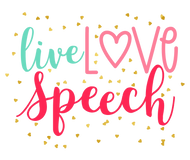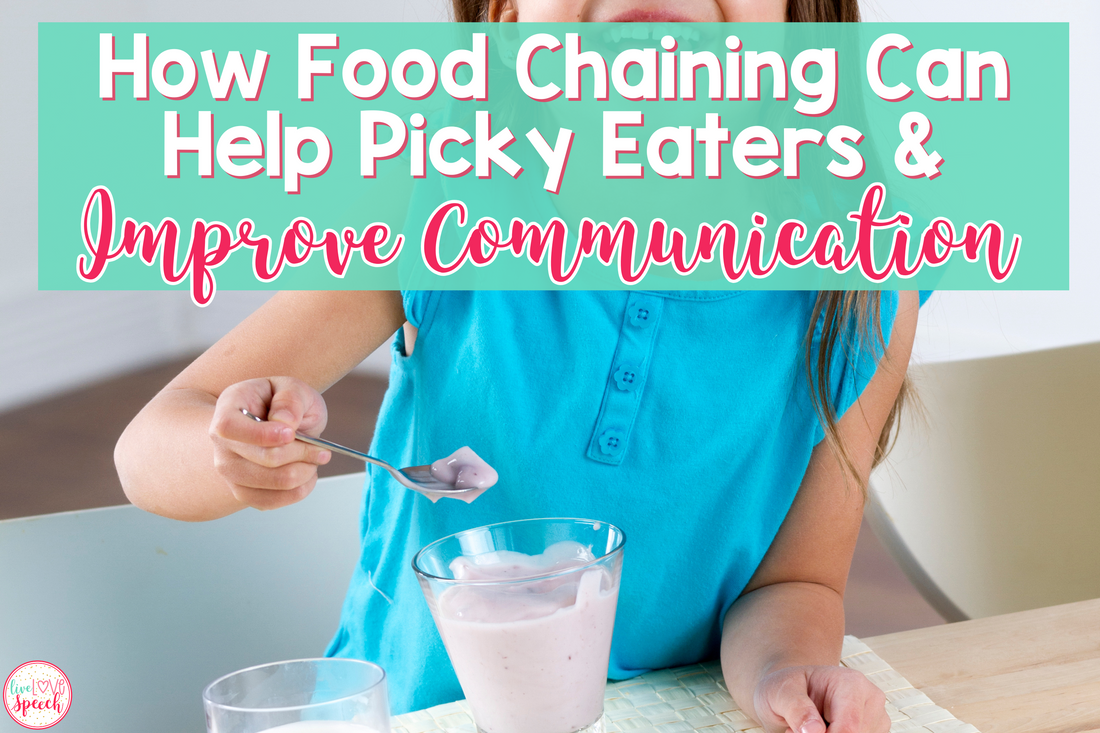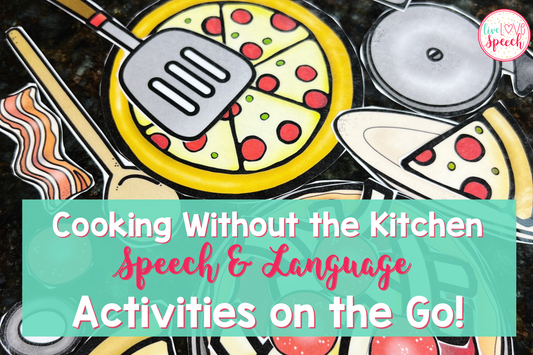
If your student or child is stuck on the same two “safe” foods…
I see you.
And I’ve been there.
As a mom, SLP, and creator of Visual Recipe Cards, I know picky eating can feel like a full-time job.
Let’s take some pressure off and bring some fun back to food. Food Chaining!
What is Food Chaining?
Food chaining is a low-pressure, therapist-informed strategy that gently expands a child’s food comfort zone.
It works by introducing new foods that share familiar features, like shape, taste, or texture.
No cold turkey. No “just try it” demands.
We’re talking baby steps, not big leaps.
Let’s break down a few chains:
Chicken Lover Chain:
Chicken nugget → baked chicken tenders → grilled chicken cubes
Each step keeps a familiar texture or taste while adding just enough variety.
Yogurt Lover Chain:
Yogurt → yogurt with fruit puree → fruit & yogurt parfait → diced fresh fruit with a yogurt dip
Smooth becomes chunky—but stays in the “safe zone” with every step.
Mac and Cheese Chain:
Boxed mac and cheese → homemade mac and cheese → pasta with butter and shredded cheese → plain pasta with sauce
Same noodles, new flavors. It’s all about slow, predictable change.
Each food feels familiar. It keeps the trust.
And trust is key when working with picky eaters.
👉 Want even more tips for working with picky kids?
Check out my blog post: 7 Tips for Picky Eaters
Why It's a Big Win for Communication, Too

Food chaining doesn’t just expand the plate.
It opens the door to real-life language.
When kids explore food safely and supportedly, you unlock powerful communication moments, without pulling out flashcards or structured worksheets.
Here’s what naturally starts happening:
Kids label textures and ingredients
Words like “crunchy,” “cheesy,” and “cold” pop up as they touch, taste, and talk about food.
This sensory-rich experience boosts vocabulary without the pressure.
They request favorites or set boundaries
“More jelly!” or “No crust, please.”
These quick, meaningful exchanges help kids learn to express wants, needs, and preferences.
They sequence actions
“First we spread, then we taste.”
Cooking routines create the perfect structure for practicing time-order words and sentence starters.
They answer WH-questions
“What do you taste?” “How does it feel?” “What comes next?”
These moments support comprehension and expressive language, without feeling like a quiz.
They practice social skills
Whether they’re prepping a snack with a sibling, cooking in a small group, or sharing food during circle time, they’re taking turns, making choices, and communicating in context.
These little moments add up.
Language becomes meaningful, functional, and fun.
All these tiny moments = BIG communication growth.
Cooking + Food Chaining = SLP Gold
Let’s go back to that cracker example:
Plain crackers → crackers with cream cheese → buttered toast → grilled cheese sandwich
Start with what they know.
A plain cracker is safe, predictable, and familiar.
Next, spread a thin layer of cream cheese.
Same crunch, new flavor and texture.
Then offer buttered toast, similar look, but slightly warmer and softer.
Finally, try grilled cheese. Same shape. New texture. More variety.
Each step in this chain isn’t just about eating.
It’s packed with language opportunities.
You can model action words (“spread,” “cut,” “taste”).
You can highlight descriptive words (“warm,” “melty,” “golden”).
You can invite your student or child to comment, describe, or make a choice.
And guess what?
You don’t need to plan a full session or lesson.
Just cook together.
Talk as you go.
Let the food lead the way.
Use Visuals to Bring It All Together
Want a tool that brings food chaining and communication into one simple, structured system?
That’s exactly what my Visual Recipe Cards do.
Every card includes:
-
Visual step-by-step directions
-
Core vocabulary support
-
Real photos + icons for easy comprehension
-
Natural language targets built into each step
They're perfect for:
-
Therapy sessions
-
Classroom groups
-
At-home routines
-
Picky eaters and beginning communicators
💡Hot tip: My Snacks & Stories Visual Recipe Set pairs a fun snack recipe with a matching read-aloud.
It’s an easy, low-prep way to combine food exploration, language practice, and literacy all in one.
👉 Grab Snacks & Stories Visual Recipes here
Tips for Success with Food Chaining
Whether you’re a parent, SLP, or teacher, these tips will set you (and your picky eaters!) up for success:
Start with what they love.
Think of their favorite food as the launchpad, not the finish line.
Go slow.
One small shift at a time. Let the child get comfortable at each step.
Let them lead.
“Do you want to stir or spread?” Simple choices build confidence.
Model, don’t pressure.
Take a bite yourself. Talk about it. Invite them to join—but let them take the lead.
Celebrate every step.
Touching, smelling, or licking a new food? That’s progress. Praise it.
Pair visuals and language.
Use recipe cards, describe actions, and ask questions. Build language in every bite.
More Ways to Build Communication at the Table
Want to get even more language practice out of snack time or cooking?
Try these:
Create a mini cooking show.
Let your student or child pretend to host. “First, we pour the milk…”
This boosts sequencing, fluency, and expressive language.
Sort foods by texture, shape, or color.
“Let’s put all the crunchy ones here.”
Perfect for vocabulary building and categorizing skills.
Use Visual Recipe Cards in groups or 1:1.
They work in therapy rooms, classrooms, or at home.
No reading required—just visuals, structure, and engagement.
Add a read-aloud to cooking time.
Check out my Snacks & Stories Visual Recipe Set for built-in book pairings.
Ready to Try Food Chaining?
You don’t need to force food.
You don’t need to bribe or beg.
You just need a smart, structured strategy that supports both eating and communicating.
Food chaining meets kids where they are—and helps them grow from there.
And if it includes grilled cheese or cookie dough dip? Even better.
👉 Grab your Visual Recipe Cards here
👉 Try the Snacks & Stories Set here
👉 Read: 7 Tips for Picky Eaters
You've got this, and I’m here to help make it visual, functional, and FUN.







